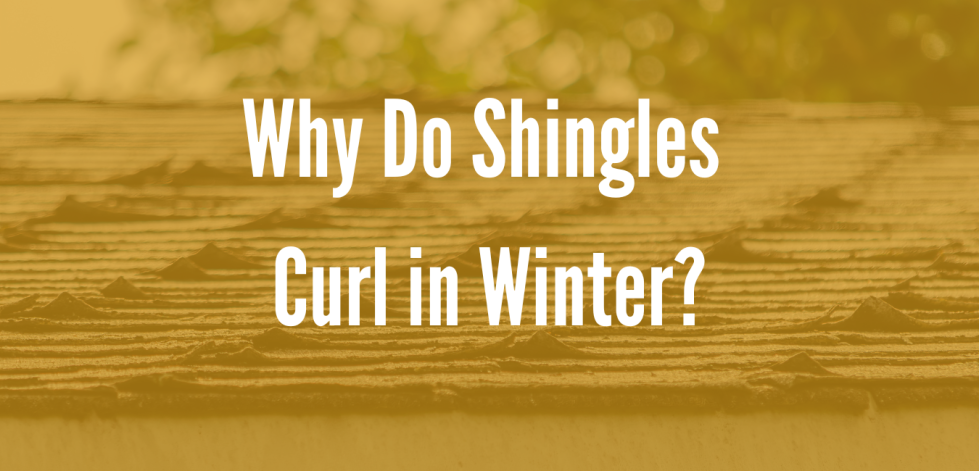Winter brings with it a myriad of challenges for homeowners, and one often-overlooked issue is the curling of roof shingles. Knowing why shingles curl in the winter is the key to preventing it from happening. As the cold weather sets in, various factors such as ice dam formation and temperature fluctuations can contribute to the curling of shingles, posing a threat to the integrity of your roof. In this blog post, we’ll delve into the root causes of shingle curling during the winter months and provide practical tips on how homeowners can address this issue to ensure their roofs remain resilient throughout the season.
1. Ice Dam Formation:
One of the primary contributors to shingle curling in winter is the formation of ice dams. As snow accumulates on the roof and subsequently melts, the water can refreeze along the roof’s edge, creating an ice dam. This dam prevents proper drainage, causing water to seep beneath the shingles and leading to their curling.
2. Temperature Fluctuations:
Drastic temperature changes are another key factor. The constant expansion and contraction of roofing materials in response to fluctuating temperatures can weaken the shingles over time. This weakening makes them more susceptible to curling, especially in the cold winter months.
Practical Tips to Straighten Out Curled Shingles
1. Early Detection Matters:
Regular roof inspections are crucial, especially in winter. Keep an eye out for any signs of shingle curling. Early detection allows for prompt action and can prevent further damage.
2. Safe Snow and Ice Removal:
Addressing the root cause, namely ice dams, is key. Safely remove accumulated snow and ice from your roof using a roof rake or by hiring professionals. This helps eliminate the conditions that lead to shingle curling.
3. Repair or Replace Damaged Shingles:
If you notice curled shingles, it’s essential to address them promptly. Gently lift the curled edges and apply roofing cement beneath them. Press the shingle back into place, and secure it with nails. For severely damaged shingles, consider replacing them to maintain the overall integrity of your roof.
4. Ensure Proper Ventilation:
Adequate ventilation is critical in preventing temperature-related shingle issues. Proper attic ventilation helps regulate temperature and minimizes the expansion and contraction that contribute to shingle curling.
5. Professional Inspection:
When in doubt, seek professional help. Engaging a roofing professional for a comprehensive inspection can identify underlying issues and provide tailored solutions to ensure your roof’s longevity.
Keeping Your Roof Resilient in Winter
As winter tightens its grip, safeguarding your roof against curled shingles becomes paramount. Understanding the causes, from ice dams to temperature fluctuations, empowers homeowners to take proactive steps. Regular inspections, prompt repairs, and addressing the root causes are your weapons in the battle against curled shingles. By adopting these practical tips, you can ensure that your roof stands strong against the winter freeze, protecting your home and maintaining its structural integrity.
